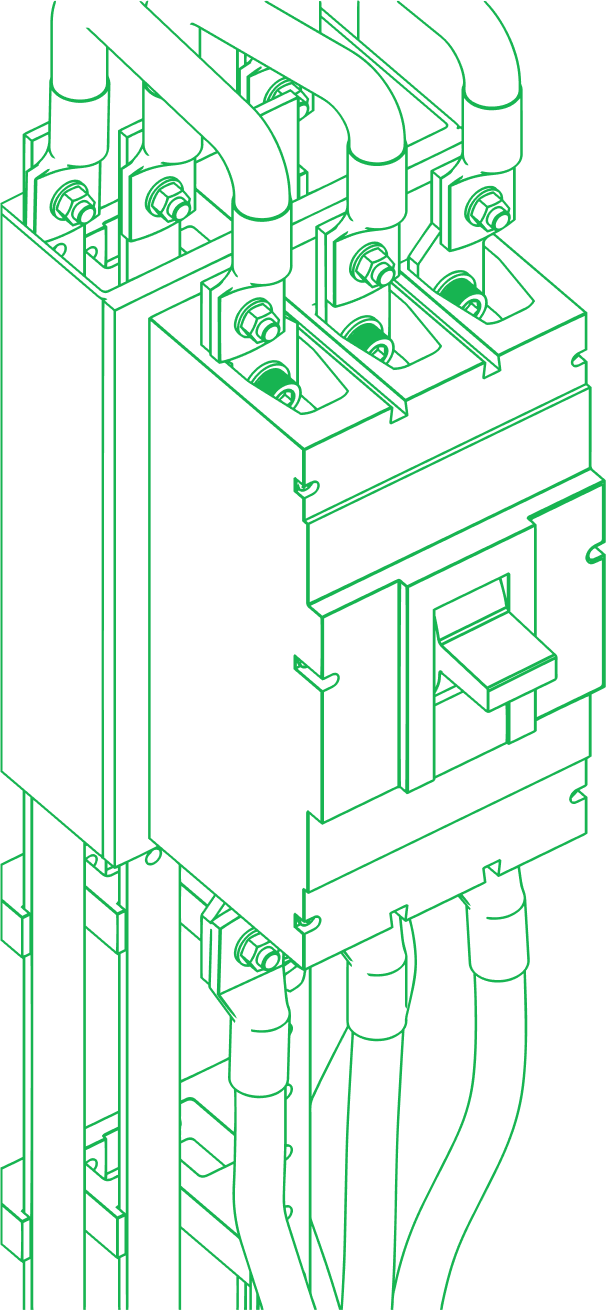Table of Contents
A solid CRM isn’t optional anymore, it’s how you keep customer data clean, track every touchpoint, and actually connect marketing and sales. Two names come up over and over: HubSpot and Pipedrive.
Both are strong choices, but they serve slightly different teams and growth goals. Below, we’ll break down how they stack up in 2025 from pricing and integrations to how they handle sales, marketing, and support.
TL;DR: HubSpot vs Pipedrive What You Should Know
Bigger toolbox: HubSpot still does it all (CRM, marketing, sales, service, and content) all in one place.
Scales fast: Pricing is more flexible in 2025, and seats can scale up or down as your team grows.
Plug-and-play: Thousands of integrations in the HubSpot App Marketplace make it easy to connect your stack.
Smarter insights: HubSpot’s new AI features give sharper reporting, predictive lead scoring, and automated recommendations.
Better support: HubSpot’s 24/7 help, free Academy, and massive community are still unmatched.

Which offers better value on pricing: HubSpot vs Pipedrive?
Pipedrive’s pricing still looks great at first glance. Plans start around $15 per user/month and scale up to roughly $99 per user/month for the full suite. It’s straightforward and affordable until you need extras like email campaigns, automation, or AI insights. Those are usually locked behind higher plans or add-ons.
HubSpot, on the other hand, starts with a Free CRM that’s actually useful: contact management, pipelines, reporting dashboards, and unlimited users. Then you can grow into the paid tools as you need them:
-
Starter: Around $20/month per seat adds automation, email templates, and expanded reporting.
-
Professional: Unlocks deal automation, forecasting, sequences, and advanced analytics.
-
Enterprise: For companies that need deep customization, team permissions, and AI-powered insights.
Here’s the difference: HubSpot doesn’t force you to switch systems as you grow. You can start free, scale up when ready, and keep everything connected the whole way. And that growth path is clearly working as HubSpot’s customer base hit 258,258 companies as of March 2025, a 19% increase year-over-year.
You can try the HubSpot Free CRM to get started at no cost.
(Affiliate link: if you sign up through it, we may earn a commission at no extra cost to you.)
Pricing Breakdown
HubSpot CRM Suite Pricing (2025)
-
Free CRM: $0 forever for unlimited users.
-
Starter CRM Suite: Around $30/month — includes Starter versions of Sales, Service, and Marketing Hub.
-
Professional tiers: From $450–$900/month, depending on seats and hubs.
-
Enterprise tiers: Custom pricing, but built for scaling businesses that need advanced analytics, AI, and security controls.
HubSpot’s steady growth backs up that value: in Q1 2025, the company reported $714.1 million in revenue, up 16% year-over-year, showing that more teams are investing in the platform to run their entire go-to-market system.
Pipedrive CRM Pricing (2025)
-
Essential Plan: About $14.90/user/month.
-
Advanced: Around $39/user/month.
-
Professional: Around $59.90/user/month.
-
Power and Enterprise: Between $79–$99/user/month.
Ready to make the switch? A seamless migration into HubSpot can help you unlock powerful features from day one. Find out more about HubSpot migration services.
If you’re ready to unlock automation, analytics, and more, the HubSpot Starter Customer Platform – Monthly ($20/seat) is the most affordable way to scale into paid features.
(Affiliate link: if you purchase through it, we may earn a commission at no extra cost to you.)
Which CRM is easier to use: HubSpot vs Pipedrive?
Pipedrive gets points for simplicity. It’s clean, visual, and focused on one thing: managing your pipeline. You can drag and drop deals, track progress, and get up and running fast, without the setup headaches.
HubSpot feels bigger at first, but once you get the hang of it, it’s surprisingly intuitive. You can customize dashboards, rearrange pipeline stages, and automate repetitive work without touching code. Plus, HubSpot’s built-in AI suggestions and task automation make managing deals faster than ever.
If you want a CRM you can master in an hour, go Pipedrive.
If you want one that your entire business can grow into, go HubSpot.
We helped Applied Ceramics move into HubSpot and build lead-qualification workflows that housed clean data, automated scoring and multi-stage hand-offs, something a pure sales-pipeline tool couldn’t have handled.
Check out the case study HERE
How do HubSpot vs Pipedrive compare on customization and integrations?

Both CRMs give you room to customize, but HubSpot’s flexibility runs deeper.
Pipedrive lets you tweak pipelines, add custom fields, and build simple automations. It integrates with popular tools like Google Workspace, Slack, and Zapier. It’s easy enough for teams focused only on sales, but once you start adding marketing or service workflows, the cracks start to show.
HubSpot, meanwhile, has turned its ecosystem into an advantage.
You can:
-
Add custom objects, deal stages, and reports.
-
Build workflows that connect sales, marketing, and service.
-
Tap into 1,900+ native integrations through the HubSpot App Marketplace.
-
Use AI to generate emails, automate lead scoring, and even clean data.
- Close 8× more deals
In short: Pipedrive customizes your pipeline. HubSpot customizes your business.
Unlock HubSpot’s full potential by connecting it with other essential tools for a unified experience. Learn more about HubSpot integrations.
How do sales and marketing tools compare in HubSpot vs Pipedrive?
Pipedrive is laser-focused on sales. It gives you a clean pipeline, deal tracking, and solid forecasting. But it doesn’t go far beyond that without extra tools. If you need campaign automation, lead scoring, or reporting across departments, you’ll need plugins or third-party apps.
HubSpot is built for the entire revenue engine, not just one department.
Among our own clients, vcfo’s pipeline and marketing engine was optimized using HubSpot (sales + marketing hubs) under RevPartners’ stewardship, demonstrating how one unified CRM eliminated tool-duplication and rare hand-offs.
Check out the case study HERE
Here’s what stands out in 2025:
-
Sales Hub: Email tracking, sequences, AI call summaries, and automated deal workflows.
-
Marketing Hub: Full campaign automation, forms, landing pages, and AI-generated content. According to HubSpot’s ROI Report, customers saw a 107% increase in inbound leads within six months of using Marketing Hub
-
Operations Hub: Data syncing, deduplication, and workflow management.
-
Service Hub: Ticketing, feedback surveys, and knowledge base tools. Service Hub users saw a 28% faster ticket-close rate within six months, showing how HubSpot isn’t just about winning deals but keeping customers happy after the sale.

Everything talks to each other inside one CRM. That means fewer spreadsheets, faster follow-ups, and full-funnel visibility, something Pipedrive just can’t match.
If you’re serious about aligning sales and marketing, HubSpot’s unified platform is where that happens.
For expert insights and specialized support with HubSpot’s advanced tools, consider technical consulting. Discover HubSpot technical consulting.
Which offers better customer support and CRM community: HubSpot vs Pipedrive?
Support matters, especially when your CRM runs your business.
HubSpot has one of the best support ecosystems in tech.
You get:
-
24/7 live chat, email, and phone support (depending on plan)
-
The HubSpot Academy, a free library of tutorials and certifications
-
A global network of HubSpot partners and agencies for hands-on help
-
Massive user communities like Sprocketeer and the HubSpot forums
Whether you’re troubleshooting or leveling up your strategy, there’s always someone to help.
Pipedrive offers reliable support via chat and email plus a solid help center. But its community is smaller and less active, and advanced implementation help often comes at an extra cost.
If community, training, and real-world support matter, HubSpot’s ecosystem is simply stronger.
What are the pros and cons of HubSpot vs Pipedrive for B2B CRM buyers?
HubSpot Pros
-
Genuinely all-in-one: CRM, sales, marketing, service, and operations in one system
-
Free to start, scalable as you grow
-
1,900+ integrations and advanced customization
-
World-class customer support and community
-
AI-powered workflows, forecasting, and analytics
HubSpot Cons
-
Can get pricey as you scale (but you get a full platform, not just a CRM)
-
More setup time if you’re only managing a basic pipeline
Pipedrive Pros
-
Easy to set up and learn
-
Affordable for small sales teams
-
Clean, visual pipeline design
Pipedrive Cons
-
Limited marketing and service tools
-
Heavy reliance on add-ons for automation or reporting
-
Less suitable for larger or multi-team organizations
If you’re running a small sales team and just need pipeline visibility, Pipedrive’s a solid pick.
But if you want to connect your sales, marketing, and service teams, automate reporting, and actually grow revenue, HubSpot gives you room to do it all in one place.
Final verdict: HubSpot vs Pipedrive — which CRM is best for growing your strategy?
Pipedrive is great for staying organized.
HubSpot is built for building momentum.
If your goal is to hit short-term sales targets, Pipedrive will get you there. But if you’re building long-term revenue systems with marketing automation, lead scoring, customer service, and data all in one CRM, HubSpot is the smarter investment.
For a seamless start, let experts handle your HubSpot onboarding. Explore HubSpot onboarding services.


-1.png)


